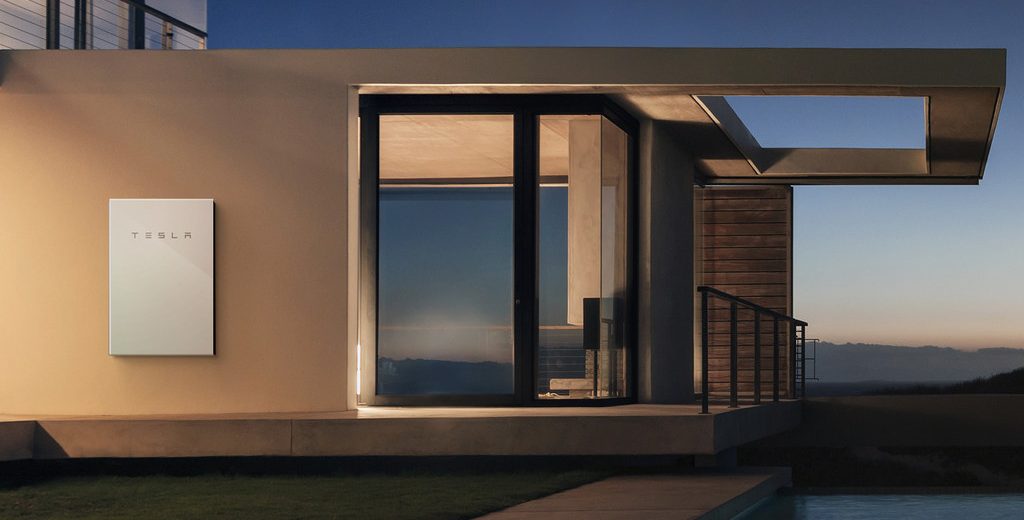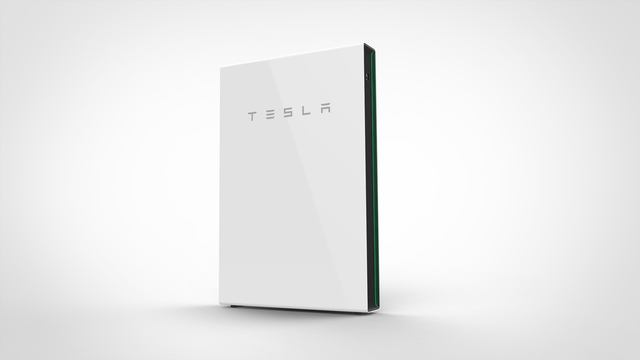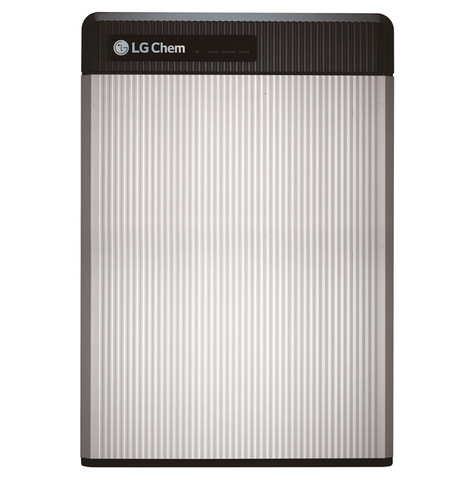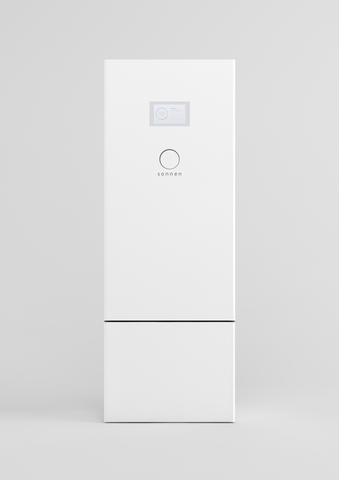Tesla Powerwall 2 Review

Here we review the Tesla Powerwall 2, which aims to be a simple solution to the difficulties with solar power, by making sure you’ve actually got the power when you need it.
If you are at work for most of the day, almost all of the power consumed by your house is used in the evenings, when your solar panels are no longer generating electricity. To use the solar power generated, you could consider using timers to move power-hungry tasks like laundry and dishwashing into the day, where they can take advantage of your solar system. Depending on how big your solar array is and how much power your house uses.
Alternatively – you could look at buying a battery. When buying a battery for your solar system you need to consider the costs involved. You would need to spread the cost of the battery over its lifespan, and take into account how often you’ll cycle it – the more you use it the cheaper it will work out on a per-kilowatt-hour basis. You might find that it works out cheaper for you to use grid power in your area, though you might still consider buying a battery if you need short term protection from black-outs. Or even better than just buying a battery, you could buy a Tesla battery, better known as the Powerwall 2.

What is the Tesla Powerwall 2?
The Tesla Powerwall 2 is the next generation of the Powerwall introduced by Tesla in 2015. It’s designed to work alongside Tesla’s solar roof tiles. A quick sidenote: Tesla plans to start manufacturing their solar roof tiles in mid-2017, so there’s still a wait until we see them on the market.
Compared against the older model, the Powerwall 2 claims to have more than twice the storage capacity (14 kWh, increased from 6.4 kWh) and unlike the original, the Powerwall 2 includes an inverter.
The first Tesla battery was estimated by Forbes to only be suitable for off-grid homes or areas where the energy costs are very high. Whilst the Powerwall 2 improves on this, it probably isn’t going to change the costs dramatically – perhaps bringing the cost down a few cents from Forbes’ estimate of 30¢ per kWh. You’re unlikely to find it a cost effective solution if you’re getting anywhere close to the national average of 12.5¢ per kWh. On the other hand, if you’re completely off-grid, in an expensive area like Hawaii or California, or you’re just plain ready to ditch the electric grid, it may well be worth a look.
In case you missed it, here’s the full announcement video for the Powerwall 2.
What’s so good about it?
- The Powerwall 2 has twice the storage capacity of any battery in its price range. An ‘average’ home with average consumption (1.2kW/hr) will have juice for roughly 11 hours.
- An integrated inverter makes the Powerwall 2 even more competitive, and means you don’t need to install one separately.
- If you need more storage capacity you can easily stack multiple units
What’s less than great?
- Unless you have a serious need to keep the power on 24-7 it’s still not a no-brainer in terms of overall cost.
- The Powerwall 2 is bit larger and perhaps noisier than some of the competition.
- You may have to purchase multiple units for any above average house or above average consumption.
How Much is a Tesla Powerwall?
The Powerwall 2 costs $5,500. With other battery packs costing $4,000 to $6,000, the Powerwall 2’s price might seem average. However, you get much more bang for your buck with Tesla, including 2 to 3 times more storage capacity and an integrated inverter as well (which some competitors don’t have). Check out the sections below for the specs of both the Powerwall 2 and its competition.
Tesla Powerwall 2 Specs
While the Powerwall 2 may seem expensive, you’re getting a premium product with serious upgrades from the first iteration of the Powerwall.
Massive Capacity
The Powerwall 2 packs significantly more punch than the original Powerwall, with more than double the storage at 14 kWh, compared to the original’s 6.4 kWh capacity. The average US home uses around 1.25 kW per hour, meaning the unit can theoretically keep the house going for about 11 hours, though if you’ve got any hungry appliances you’re not going to see anywhere near that kind of performance. In controlled circumstances, it can power lights, sockets and fridge in an average 4 bedroom house for 24 hours.
Integrated Inverter
Cost-wise it’s only a little more than getting an original Powerwall ($3,000) and a separate inverter (roughly $1,000 plus). This is handy from a convenience standpoint, even before looking at the capacity differences. You don’t have the hassle of selecting and installing a separate inverter unit, and you don’t need to deal with finding the space for it. You can get both DC-DC and DC-AC units, so you’re not stuck if you have one kind of system or the other.
No Change in Power Output
In terms of output, the Powerwall 2 performs identically to the original 6.4kWh Powerwall, comfortably kicking out 5kW continuously and 7kW at peak output. This is plenty for running the lights, fridge, entertainment systems and the like, but I think you may struggle to run a power-hungry appliance like an instantaneous shower off a single unit.
Stackable
The unit is designed to be stackable with up to nine other Powerwall 2 units. The idea is that you can easily build an energy storage system to the size you need, and expand things as and when your needs increase. Nine units is, frankly, a ridiculous amount of power for a residential home – by that point you’re probably better off looking at industrial solutions. Still, the capability is there if you need it.
Round-trip Efficiency
I’ve seen several places quoting the Powerwall 2 round trip efficiency as 90%, but this isn’t quite true. Tesla quote different percentages for the two different models, based on the different inverter options. The AC model gives an efficiency of 89%, and the DC variant manages 91.8%.
Temperature Range
According to Tesla, the Powerwall 2 can work from -20° to 50°C (-4° to 122°F). This means it should comfortably handle the vast majority of places, though I’ll be very surprised if placing the Powerwall outdoors in the direct sunshine of a Texas summer doesn’t cause performance to suffer at least a little.
Like its predecessor, the Powerwall 2 has an inbuilt proprietary coolant system to help it handle the changes in temperature better, and to help keep the batteries cool under load. This is good because it improves the efficiency of the system, but it had a mild downside–at least with the original Powerwall–it wasn’t silent. The original emitted about 50 decibels, which isn’t much, but if the Powerwall 2 does the same it might affect where you decide to install it.
New Aesthetics
Visually speaking, the Powerwall 2 is a lot simpler than it’s older brother. Tesla have gone with a much more straightforward shape, lacking the bold curves and glossy exterior of the original. It manages to come off looking elegant, clean and understated where the original Powerwall feels a little intrusive, like it’s trying to make a statement.
Interestingly, despite the impressive increase in capacity and the integration of the inverter, the Powerwall 2 is actually a lot smaller than the original. It’s nearly 23 kg (~50 lbs) heavier, despite being seven inches shorter, five inches narrower and two inches thinner. If the old aesthetic had been maintained the new model would not look at all svelte in comparison.
How well will it Perform in the Wild?
It’s hard to say definitively how well the Powerwall 2 will do, as it has only just been released, and there are no long term users to look at. That said, if we base our expectations on the performance of the original Powerwall, it looks promising. The newer model promises almost identical performance, with double the capacity and at a similar price point (when you account for the inverter).
Tesla Battery Competition
The Powerwall 2 isn’t alone in the market, though it stands fairly well clear of the competition in terms of capacity and cost. Here are a few of the competitors in the same price range:
#1 LG Chem RESU6.5

The RESU6.5 costs around $4,000 (in Europe, where it is more popular) without an inverter. Factoring that in, the cost prior to installation should be in the region of $6,000, putting it in the same ballpark as the Powerwall 2. In terms of capacity, the RESU6.5 holds 6.5 kWh. There is a larger model available – the RESU10, with 9.8 kWh – but it will set you back around $5,600, before accounting for the inverter.
- Power output is 4.2 kW continuous and 4.6 kW peak, compared to 5.0 kW and 7.0 kW for the Powerwall 2
- It’s much smaller than the Powerwall 2
- The operating temperature range is -10° to 45°C (14° to 113°F), less than the Powerwall 2
- Cooling is done by convection – the RESU6.5 won’t make any cooling noise, which might mean you’ll have a better time finding a place to install it indoors.
If you’re working with limited space, you might want to take a closer look at the RESU6.5.
#2 sonnenBatterie eco compact

Like the Powerwall 2, the sonnenBatterie eco compact comes with an integrated inverter. The unit retails for about $6500 (again, in Europe), and provides 4 kWh of storage. Aesthetically speaking I like the eco compact – sonnenBatterie seem to be going for a very clean, simple look.
- Similar size – the eco compact comes out at 635 x 889 x 228mm, compared with the Powerwall 2 775 x 1150 x 155mm .
- Less power output – the eco compact only manages 3 kW continuous and 5 kW at peak .
- Small storage – with only 4 kWh available in the base version, the eco compact struggles to compete .
- Integrated power management – sonnenBatterie are making a big deal out of their smart power management system and the accompanying app .
The sonnenBatterie eco compact is worth taking a look at, particularly if you’re interested in the smart aspects of their system.
Conclusion
If you’re looking for a power storage system for your home, and comparing apples with applies, then the Powerwall 2 has a very solid offering. It is definitely the best of the current crop, and if you want to find out even more about the Powerwall 2, visit the Tesla website.
